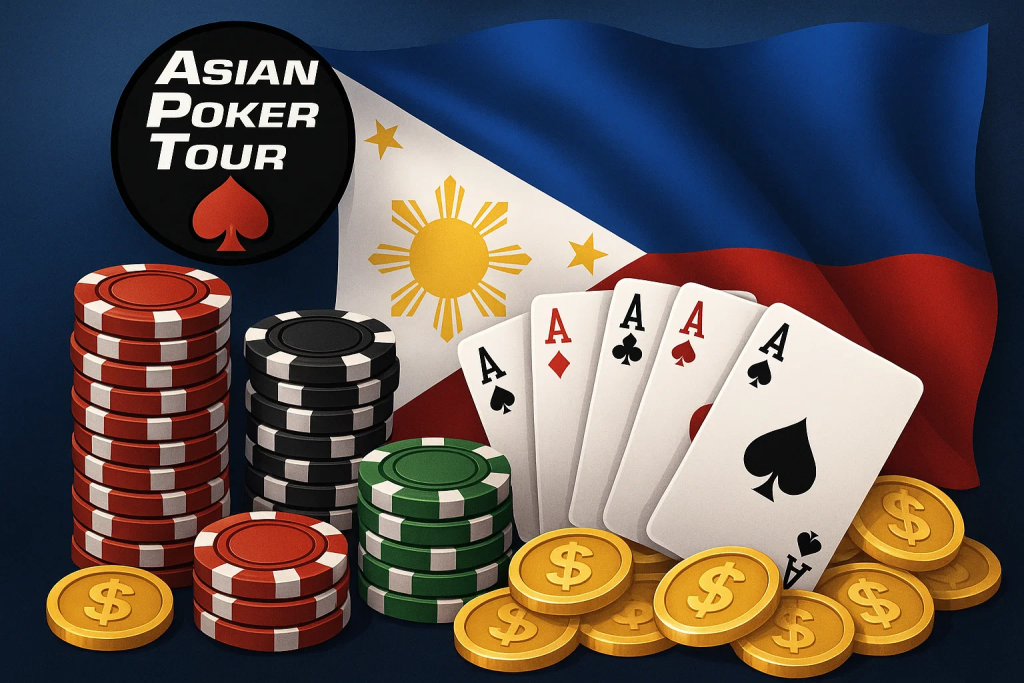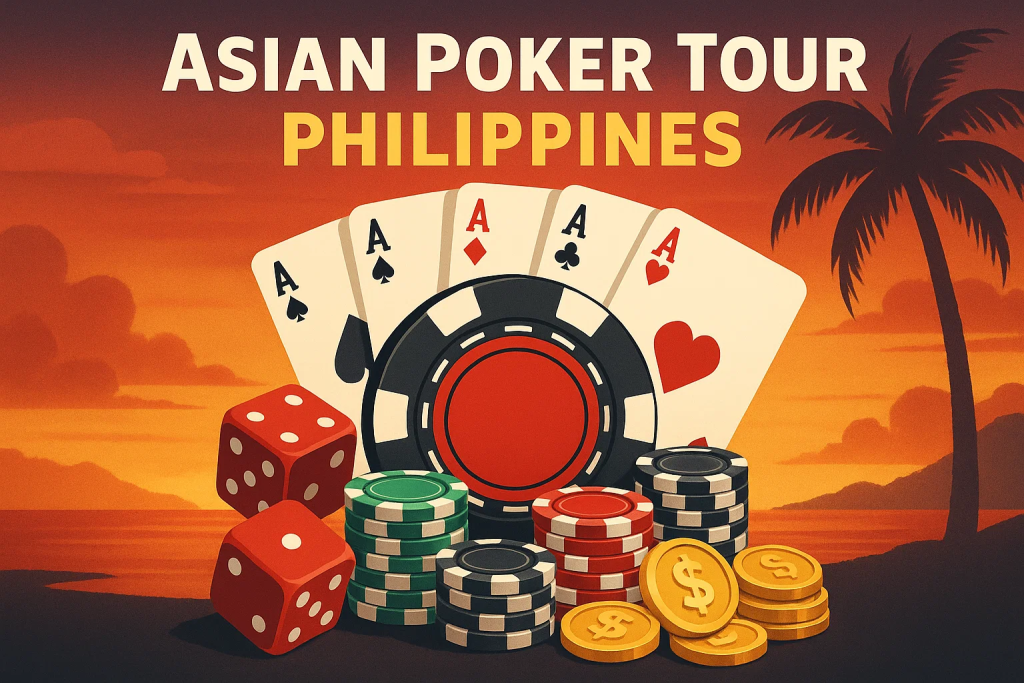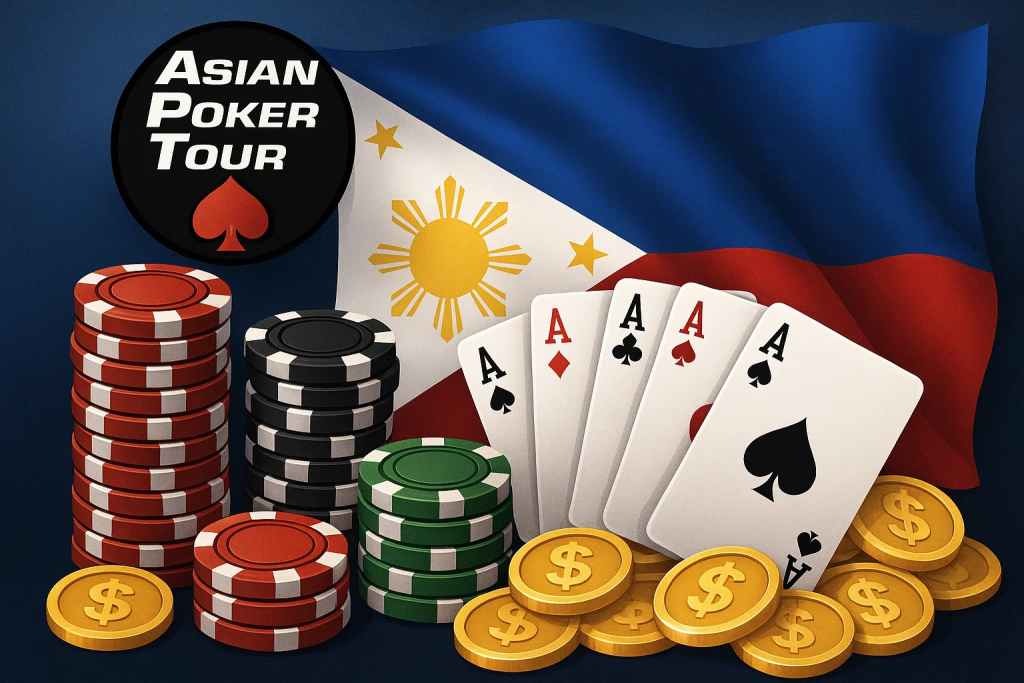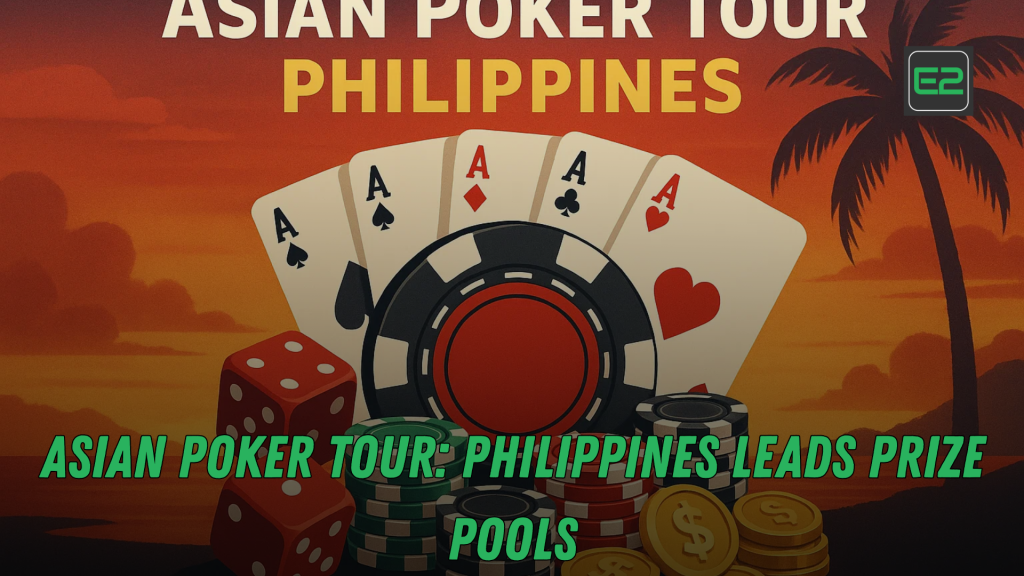Table of Contents
Why the Philippines is the region’s prize-pool engine
The Asian Poker Tour has become a lodestar for regional players and a proving ground for new champions. The Philippines has steadily grown into one of Asia’s most dynamic live-poker destinations, welcoming recreational grinders, traveling professionals, and content creators to a calendar packed with festivals. This article unpacks why prize pools in the Philippines keep breaking records, how the ecosystem supports sustained growth, and what players and partners can expect across the next cycle.

Quick definition: what counts as a prize-pool lead?
When headlines say the Philippines leads, they usually mean a combination of main event totals, high-roller entries, and series-wide guarantees. Taken together, these measures show whether a stop is expanding the pie for everyone—venues, sponsors, dealers, and of course, players. The Asian Poker Tour uses a suite of formats that convert interest into buy-ins, which is why stop after stop keeps trending upward in Manila, Clark, and Cebu.
Ten drivers behind surging participation
- Airline connectivity and value: Dozens of direct flights and competitive hotel rates make it easier to say yes to a festival.
- Player-first schedules: Multi-flight mains, late registration, and robust satellite trees maximize flexibility.
- Content flywheel: Vlogs, reels, and live streams carry stories beyond the room.
- Venue partnerships: Resorts and casinos invest in space, staging, and service because the upside is proven.
- Financial infrastructure: Smooth cash-in, cash-out, and cashier hours reduce friction.
- Dealer depth: Professional training pipelines mean more tables open on time.
- Marketing discipline: Clear key art and early calendar drops let travelers plan.
- Hospitality culture: Filipino warmth converts first visits into repeat trips.
- Format innovation: Mystery bounties, progressive knockouts, and mix-game cameos widen the funnel.
- Operational excellence: When issues arise, staff fix them fast—an underrated reason prize pools spike at the Asian Poker Tour.
Format engineering that turns curiosity into conversions
Prize pools respond to structure. The main event’s flight schedule, late-registration windows, satellite ladders, and payout curves influence behavior in real time. Deep, playable stacks attract travelers, while progressive bounties and mystery formats activate creators who love rail-friendly sweat. Side events should stretch across bankroll levels so first-timers and high rollers can share the same stage without friction. The Asian Poker Tour keeps iterating on these levers, and the Philippines crowds keep responding.
The organizer playbook: invisible systems that fill seats
A record-breaking series is never an accident. Behind the scenes, the operator coordinates with venues, banks, regulators, and media partners. Staffing, chip inventory, dealer rotations, floor coverage, and camera placement must be timed to the minute. Perhaps most importantly, customer support and cashier operations need to be fast and friendly. Nothing grows prize pools faster than a queue that moves and a floor that solves problems. The Asian Poker Tour has refined these basics into habits.
Economics 101 for festival growth
When a festival succeeds, local cafes, ride-hailing drivers, and souvenir merchants all feel the bump. Prize pools are headline numbers, but the multiplier stretches far beyond the payout desk. That is why city partners roll out the welcome mat for the Asian Poker Tour and why sponsors return: the event’s spending is distributed across neighborhoods, not just inside the rope.
Player pathways: satellites, qualifiers, and second chances
Wide qualifiers are the on-ramp for new talent. Feeder events in neighborhood card rooms, online paths where permitted, and on-site megas transform railbirds into entrants. Re-entry structures and Day 2 buy-ins (when offered) keep dreams alive a bit longer. The Philippines stop of the Asian Poker Tour leans into these on-ramps, turning casual interest into tangible participation.
Table experience: why the room feels different in Manila
Veterans often cite the room vibe as a deciding factor. Friendly dealers, attentive floors, and efficient seatings set a tone of professional hospitality. Creative side-promotions—team challenges, last-longer leaderboards, or charity sit-and-gos—add texture between flights. The Asian Poker Tour has learned that small comforts scale: better lighting, reliable charging ports, and clear signage make twelve-hour days feel shorter.
Broadcast and content: telling stories that travel
Final-table streams with expert commentary transform a local festival into a global event. Clean graphics, hand-reveal tech where allowed, and multilingual captions help new viewers understand key moments. Clips then seed social media, funneling fresh players into future stops. Because the Asian Poker Tour runs on a predictable cadence, creators can pre-plan shoots and build recurring series around the Philippines leg.
Responsible play and player care
Big prize pools are exciting, but festivals must still model responsible participation. Organizer messaging should emphasize budgets, breaks, hydration, and sleep. Medical stations, cooldown lounges, and mental-health resources demonstrate concrete care. The Asian Poker Tour has made steady progress here—quiet changes that protect the ecosystem while keeping the game fun.
Travel practicalities for international players
- Visas and entry: Check the latest entry guidance and passport validity rules.
- Payments: Confirm accepted methods at the venue; some events operate cashiers with set hours.
- Connectivity: Local SIMs and venue Wi-Fi keep you synced to table draws and updates.
- Safety and transport: Ride-hailing apps, hotel shuttles, and vetted taxis are your best bet.
Well-briefed travelers arrive calmer and play better, which ultimately supports prize pools at the Asian Poker Tour.
How teams and stables plan their trips
Backers and coaching groups often travel with structured plans: marked rest days, review sessions, and content blocks. They also coordinate swaps and piece-selling with transparency. The Philippines leg of the Asian Poker Tour encourages this professionalization by releasing schedules early and keeping structures stable across seasons.
Payout design: keeping the dream alive without flattening the top
Payout curves are a quiet art. A well-calibrated structure pays a meaningful number of min-cashes while preserving real upside for final-table runs. Mystery and bounty formats add alternative ROI lines that do not require pure laddering. Over time, this balance keeps regulars engaged and newcomers hopeful—two groups the Asian Poker Tour must serve at once.
Security and compliance: the trust engine
Festival reputations can rise or fall on how well organizers handle edge cases. Clear rules on table talk, device use, and penalties protect fairness. Secure cashier operations, strong surveillance, and visible floor coverage build confidence. The Asian Poker Tour invests in these systems because trust is the product.
Venue partnerships that make the room sing
Great poker rooms are the sum of many small decisions: table spacing, HVAC comfort, food options, and restroom proximity. Resorts that host the Asian Poker Tour in the Philippines often lean into local flavor—music, art, and cuisine—so visitors feel they are at a celebration, not a convention. That atmosphere encourages longer stays and return trips.
Marketing that respects both rookies and regs
A smart campaign welcomes first-timers without alienating grinders. Explainer posts, beginner-friendly satellites, and etiquette primers sit alongside deep-dive previews for veterans. Influencer partnerships are most effective when creators genuinely love the game and disclose relationships. The Asian Poker Tour benefits when marketing educates rather than simply hypes.
The Philippines advantage: culture, cost, and content
Why does the Philippines, specifically, keep topping series totals? First, hospitality is a national superpower; smiles and service are part of the brand. Second, relative cost of travel and lodging lets players extend their stays. Third, creators find endless B-roll in markets, coastlines, and skylines, making the Asian Poker Tour stop extremely “clippable.” Those three forces—culture, cost, content—amplify each other.
What local players gain from global fields
When international pros fly in, the average skill level rises, but so does the learning opportunity. Study groups form, hand histories circulate, and coaching pop-ups appear around the venue. Filipino regulars sharpen their ranges, discipline, and emotional control. In the long run, the whole region gets stronger, reinforcing the Asian Poker Tour as a launchpad for careers.
Ethics and etiquette: keeping the room welcoming
Simple norms—act in turn, protect your cards, be kind to staff, and mind the rail—prevent a thousand small frictions. Angle-shooting hurts everyone and erodes trust. The Philippines scene polices itself well, and the Asian Poker Tour codifies expectations with clear signage and staff training.

A sample week on the festival calendar
- Day 1–2: Opening flights of the Main Event; satellites in every break.
- Day 3: Mystery bounty day; social content explodes as envelopes open.
- Day 4: High roller begins; side events for mid-stakes grinders.
- Day 5: Main Event Day 2; bubble pressure and streaming coverage.
- Day 6: Final table; trophy photos; charity sit-and-gos.
- Day 7: Wrap party and travel day.
That cadence is familiar to regulars and friendly to newcomers, which is why the Asian Poker Tour consistently posts strong numbers in the Philippines.
Media relations: why the press shows up
Reporters love a reliable storyline, and “records broken” is evergreen. They also appreciate access: winner quotes, quick stats, and high-res photography. The Asian Poker Tour has learned to prepare press kits in advance so journalists can file fast and accurately.
Women in the field: visibility and momentum
Female participation is rising across buy-in tiers. Dedicated satellites, mentorship circles, and safer-space policies contribute to this trend. Spotlighting champions and storytellers inspires the next wave, and the Asian Poker Tour gains long-term resilience when the player pool diversifies.
Beyond Manila: regional synergy
Although the capital captures headlines, stops in Clark, Cebu, or emerging resort corridors distribute benefits across the archipelago. Each locale adds its flavor and draws its own catchment area. This decentralization keeps the Asian Poker Tour flexible and less exposed to city-specific constraints.
The content creator’s checklist
- Shot lists for B-roll and interviews
- Battery and storage redundancies
- Pre-cleared filming zones and signage rules
- Release forms and sponsor disclosures
Creators who prepare respect the room and help the Asian Poker Tour reach new audiences responsibly.
The sponsor playbook: value without noise
Partners do best when they enhance the experience: hydration stations, mobile charging, welcome lounges, or local tour discounts. Branded segments on streams should teach or delight, not simply sell. When brands add value, players associate them with their best memories of the Asian Poker Tour.
Sustainability and accessibility
Hybrid schedules and smart shipping lighten the footprint. Venues that offer ramps, captioning on streams, and quiet rooms widen participation. Over time, these choices pay back in attendance and goodwill, further strengthening the Asian Poker Tour brand in the Philippines.
Risk management and contingency planning
Weather, tech hiccups, and traffic can disrupt even perfect plans. Backup internet, mirrored encoders, overflow seating, and flexible start windows keep days on track. A calm, well-briefed staff turns potential crises into minor footnotes, and regulars remember that the Asian Poker Tour runs tight ships.
Looking ahead: trends to watch
- Deeper streaming integration with real-time hand histories and multilingual commentary.
- Smart registration that predicts peak lines and nudges players into off-peak windows.
- Broader game mix as regional appetite for mixed events grows.
- Community impact projects that tie charity to marquee days.
The Philippines has the ingredients to stay on top of series totals, and the Asian Poker Tour has the incentives to keep investing.
Call to action: see you at the next final table
If you’re planning a trip, start with dates and a budget, then choose your flights and a hotel close to the venue. If you’re a brand, think about how your presence can make the experience better for players and railbirds. If you’re media or a creator, request credentials early and ask about filming zones. Most of all, bring good energy. The Asian Poker Tour thrives when the room is welcoming, the schedules are clear, and the stories are shared widely.
Deep dive: the prize-pool flywheel in the Philippines
Prize money grows when four loops start feeding one another. The first is product loop: formats feel fair, dealers are sharp, floors are visible, and payouts make sense. Players return because the basics are respected. The second is reach loop: clear schedules, short-form highlights, and multilingual captions convert curiosity into attendance.
Each clip that travels across group chats nudges an extra friend to book a flight. The third is support loop: venue partners upgrade rooms, add tables, enhance food options, and promote shuttle routes so arriving and playing feels effortless. The fourth is story loop: broadcasts celebrate champions, humanize near-misses, and surface hands the community can discuss for weeks. When all four loops turn at once, a stop becomes a habit, not just a date on a calendar.
The place benefits too. Drivers get more rides, cafes sell more breakfasts, and local markets see a bump in souvenir sales. A veteran traveler might stay an extra day to dive, hike, or shoot content, which widens the economic halo. That is why local tourism boards often cooperate with schedules, signage, and welcome desks. The series becomes a civic event as much as a gaming festival, and the whole city learns how to host better next time.
From the player side, bankroll planning is the linchpin. A sensible plan sets a cap for entries, a separate budget for side events, and time off for recovery. Smart players also build in daily debriefs—fifteen minutes to review hands, emotional swings, and table selections. This ritual guards against tilt and keeps decision quality high. When more players follow sound routines, the field’s average performance rises and the product on stream looks sharper, extending the reach loop yet again.
Finally, the story loop compounds when faces become familiar. Good broadcasts humanize finalists, and strong copy on winner posts explains context—stack depths, ICM pressure, or a gutsy check-back that sealed the deal. Those details are not just trivia; they make non-players feel the room’s tension. When friends and families can follow what happened, they are more likely to tune in next time or even try a satellite. That is how casual attention matures into committed participation.
Blueprint for first-time attendees
If this will be your first festival in the Philippines, approach it like a marathon with sprints inside. Book a hotel close to the venue so breaks are restorative. Pack comfortable clothes, a hoodie for cold rooms, and a pair of in-ear plugs in case the rail gets loud. Bring a water bottle and plan simple meals that will not crash your energy; rice bowls, fruits, and light soups are excellent between flights. On arrival, walk the venue and locate essentials: registration, cashier, bathrooms, and the medical desk so you do not waste time hunting for basics.
On day one, start with a satellite to knock off rust and absorb the room’s rhythm. Use a notebook or notes app to track table numbers, seat changes, and quick hand logs; you will forget the exact action later. Set alarms for late-registration windows and plan your return from breaks five minutes early to avoid missed hands. Protect your posture by standing every hour and doing three quick stretches. Most important: build exit rules. If you fire multiple entries, decide in advance how many bullets you can afford—then honor the rule. Future-you will be glad you did.
For social media, be mindful of others’ privacy and venue rules. Film only in allowed zones, blur chips and cards if asked, and get verbal consent before focusing on another player. Creators grow the ecosystem when they model respect. For safety, use registered transport, keep cash discreet, and share your schedule with a friend. The Philippines is famously warm and welcoming, but good travel habits keep focus where it belongs—on the game.
Glossary for newcomers
Bubble: the point where one more elimination turns survivors into in-the-money finishers.
ICM: a model that values tournament chips based on payout structure, not just stack size.
PKO: progressive knockout; bounty size increases as you bust opponents.
Mystery bounty: envelopes with prizes awarded after eliminations, revealed on stream for drama.
Day 2 entry: a structure that allows buy-in at later stages with a set stack, when offered.
Metrics that matter to players and partners
Players watch ROI across a trip, not just one tournament. Useful signals include min-cash percentages, final-table conversion rates, and the number of playable side events in your target buy-in range. Partners and venues track unique attendees, room nights, dwell time, and social reach. Both sides care about reliability: how often did days start on time, how fast were rulings, and how quickly were chip races or color-ups completed? When those basics feel automatic, trust compounds—and the next festival grows.

Frequently Asked Questions
1) Why do festivals in the Philippines often top regional prize pools?
Strong hospitality, competitive travel costs, wide qualifier trees, and a content ecosystem that amplifies winners all converge to fill seats when the Asian Poker Tour comes to town.
2) What buy-ins can a first-timer expect?
From micro-stakes satellites to mid-stakes mains and high rollers, schedules are tiered so newcomers and veterans share the floor comfortably during the Asian Poker Tour.
3) How do organizers keep events fair and safe?
Clear rules, trained floors, device policies, and secure cashiers protect integrity. These systems are non-negotiable pillars of the Asian Poker Tour.
4) What’s the best way to follow results if I can’t attend?
Livestreams, recaps, and stat slates roll out daily. Social feeds and creator vlogs extend the life of each hand well beyond the room, keeping the Asian Poker Tour in your timeline.
5) How can brands participate without overwhelming the experience?
Invest in helpful touchpoints—hydration, charging, lounge space—and in educational or entertaining content. When partnerships add value, the Asian Poker Tour community welcomes them.
